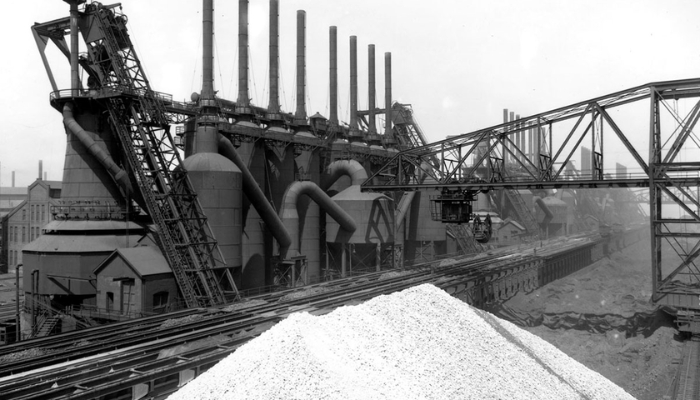US Steel: Transformation and Acquisition
Anúncios
A Historic Giant Faces a Pivotal Acquisition
In a monumental shift in the global steel industry, US Steel, an iconic 122-year-old American company, is poised to be acquired by Japan’s largest steelmaker, Nippon Steel, in a substantial $14.1 billion deal. This significant move signals not only the decline of a once-mighty industrial giant but also reflects the broader changes and challenges facing the steel sector.

[su_button url=”https://www.growcredit.com/” style=”flat” background=”#ff9900″ size=”15″ icon=”icon: credit-card-alt”]DISCOVER THE GROW CREDIT MASTERCARD[/su_button]
Historical Significance
US Steel, a trailblazer in the early days of American industrialization, has experienced a gradual decline over recent decades. Once holding the title of the world’s largest steelmaker, the company has seen its prominence wane, overtaken by competitors like Nucor Steel. The $14.1 billion acquisition by Nippon Steel stands as a testament to the shifting dynamics within the steel industry, with US Steel at the forefront of these transformative changes.
Divergent Views: CEO Optimism and Union Opposition
US Steel’s CEO, David Burritt, expressed confidence in the acquisition, emphasizing its positive outcomes for both companies and the United States. He envisions a strengthened domestic steel industry that retains its competitiveness on the global stage. However, this optimism contrasts sharply with the stance of the United Steelworkers union, which vehemently opposes the deal. The union criticizes US Steel for neglecting the concerns of its workforce, opting for a deal with a foreign-owned entity. It has vowed to block the acquisition and is calling for regulatory scrutiny to assess potential national security implications.
Political Ripples and National Security Concerns
The acquisition has not escaped the watchful eyes of politicians, especially those from rust belt states. Concerns about selling a crucial component of America’s defense industrial base to a foreign entity have triggered a political backlash. Some lawmakers are vocal in their opposition, citing potential threats to national security.
The acquisition has become a focal point of political debates, with promises to resist what is seen as a significant foreign encroachment into a strategic sector.
Tracing the Arc of US Steel’s Historical Journey
US Steel’s history is deeply intertwined with the rise of American industry. Established in 1901 through a merger orchestrated by J.P. Morgan and Charles Schwab, the company achieved unprecedented success, becoming the world’s first entity valued at over $1 billion.
Throughout the decades, US Steel played a pivotal role in the nation’s development, contributing to iconic infrastructure projects and supplying steel for various industries. However, its peak output in the 1970s marked the beginning of a protracted decline, as foreign competitors and domestic upstarts challenged its dominance.
Industry Evolution and the Quest for Modernization
The decline of US Steel is emblematic of broader transformations in the steel industry. A shift towards more efficient and environmentally sustainable technologies has reshaped the competitive landscape. Mini-mills and foreign competitors, exemplified by companies like Nucor, have outpaced traditional integrated steelmakers by adopting innovative technologies.

US Steel’s delayed adoption of electric arc furnaces, a more efficient method, underscores the industry’s struggle to keep pace with modernization trends.
The End of an Era and the Dawn of New Challenges
In conclusion, the impending acquisition of US Steel by Nippon Steel marks the end of an era for the once-dominant American steelmaker. This transformative deal not only reflects the challenges faced by an industry giant but also symbolizes the broader evolution within the manufacturing landscape.
As traditional steelmaking confronts technological advancements and global competition, the fate of US Steel becomes a poignant narrative of adaptation and resilience in the face of transformative change. The steel industry’s future, shaped by acquisitions, technological shifts, and geopolitical considerations, will undoubtedly unfold with new challenges and opportunities on the horizon.
See also: Uber ‘s S&P 500 Debut Sparks Market Buzz
[su_button url=”https://www.growcredit.com/” style=”flat” background=”#ff9900″ size=”15″ icon=”icon: credit-card-alt”]DISCOVER THE GROW CREDIT MASTERCARD[/su_button]






